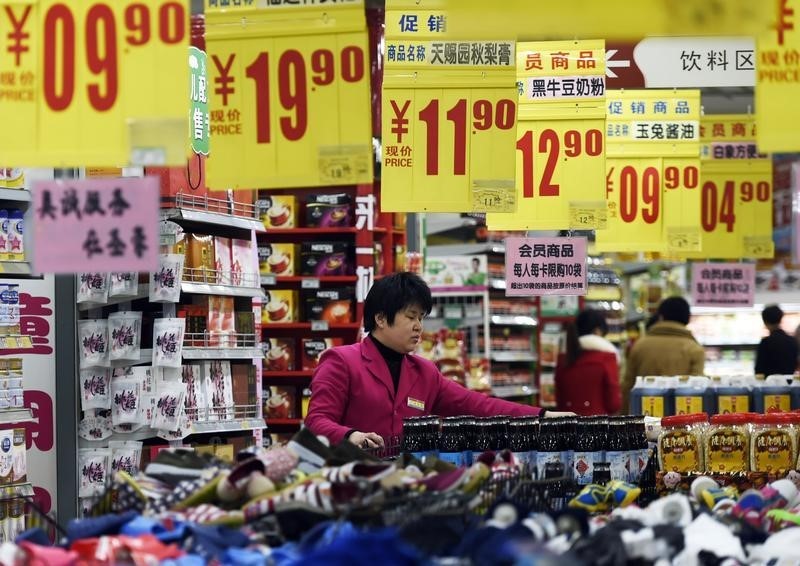Investing.com -- China’s disinflationary trend worsened in November, data showed over the weekend, with consumer prices falling at their fastest pace in three years, while producer prices remained in contraction for a fourteenth consecutive month.
The readings spurred increased concerns over the Chinese economy, which saw China’s blue chip Shanghai Shenzhen CSI 300 index sink over 1% to a near five-year low. The Shanghai Composite and Hong Kong's Hang Seng index lost 1% and 2%, respectively, on weakness in mainland stocks.
The yuan shed 0.3% despite a stronger daily midpoint fix.
China’s consumer price index fell 0.5% month-on-month in November, data from the National Bureau of Statistics showed. The reading was weaker than expectations for a drop of 0.1%, and also worsened from a 0.1% contraction seen in October.
Year-on-year, CPI inflation fell 0.5%, missing expectations for a drop of 0.1% and deepening from a 0.2% drop in the prior month. The reading was also at its weakest since September 2020.
The data showed little pick-up in consumer spending, as business activity remained weak and as growing economic risks saw consumers cut back further on discretionary spending.
The decline also came despite continued liquidity injections by the government, and signaled that Beijing needed to do more to shore up economic activity.
Weak business activity saw producer price index inflation sink 3% year-on-year in November, worse than expectations for a drop of 2.8% and the prior month’s drop of 2.6%. PPI inflation also remained in contraction for a fourteenth consecutive month.
Chinese businesses faced continued pressure from weak overseas demand, with a mild pick-up in local orders doing little to offset an overall decline.
The readings contradict a recent statement from People’s Bank of China (PBOC) Governor Pan Gongsheng, who said that inflation was expected to be “going upwards.”
China’s economy has faced consistent headwinds this year, as a property market slowdown and worsening export demand kept a post-COVID economic recovery from materializing.
Moody’s had last week warned of a potential downgrade to China’s credit rating, and also changed its outlook on the country to negative on persistent economic risks.
While Chinese authorities have made continued promises of more stimulus support for the economy, a bulk of this support has consisted of liquidity injections by the PBOC.
Investors have called on Beijing to roll out more targeted, fiscal measures to support the economy. The government has a 1 trillion yuan ($139 billion) bond issuance in the works to spur infrastructure spending.
Upgrade your investing with our groundbreaking, AI-powered InvestingPro+ stock picks. Use coupon INVSPRO2024 to avail a limited time discount on our Pro and Pro+ subscription plans. Click here to know more, and don't forget to use the discount code when checking out!
